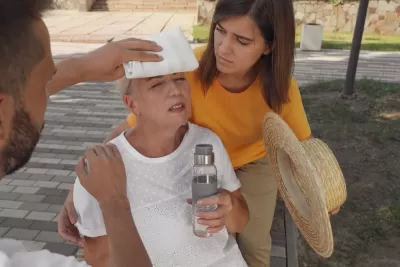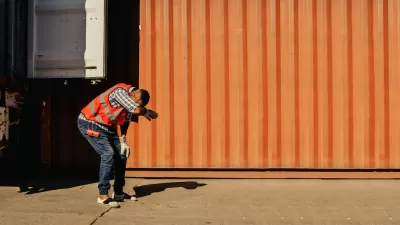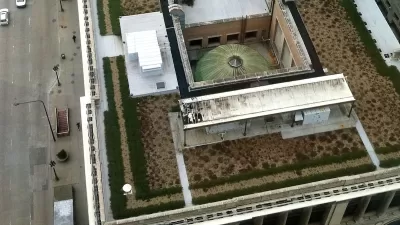Cities can protect residents from extreme heat by enhancing natural and built infrastructure, establishing heat response strategies, and implementing national policies for worker safety and disaster response.

Extreme heat is becoming increasingly common across the United States, with recent records showing the hottest months and years on record. The rising temperatures not only lead to more heat-related deaths but also impose significant economic costs. As Elizabeth Babcock and Michael Shank share in this article, while the long-term solution to this problem involves reducing fossil fuel consumption, there are several immediate actions cities can take to mitigate the impact of extreme heat and protect residents.
One effective approach is enhancing natural and built infrastructure to cool urban environments. Expanding tree canopies, especially in disadvantaged communities, can lower temperatures significantly. Green roofs, reflective cool roofs, and converting community spaces like libraries, recreation centers, and schools into cooling centers are practical measures. Additionally, creating resilience hubs in various community spaces can provide essential services and support year-round, helping residents cope with extreme heat.
Human and policy infrastructure also play crucial roles in mitigating heat impacts. Cities can appoint chief heat officers to coordinate heat response efforts across all departments and develop comprehensive heat strategies. Partnering with community groups to distribute cooling resources and focusing on efficient, low-carbon cooling solutions are essential steps. Nationally, establishing a heat safety standard for workers and creating a disaster declaration capacity for heat at the federal level are necessary to protect public health and ensure a robust response to extreme heat events.
To learn more, please read the source article.
FULL STORY: 4 ways that cities can and should protect their citizens from extreme heat

Alabama: Trump Terminates Settlements for Black Communities Harmed By Raw Sewage
Trump deemed the landmark civil rights agreement “illegal DEI and environmental justice policy.”

Planetizen Federal Action Tracker
A weekly monitor of how Trump’s orders and actions are impacting planners and planning in America.

The 120 Year Old Tiny Home Villages That Sheltered San Francisco’s Earthquake Refugees
More than a century ago, San Francisco mobilized to house thousands of residents displaced by the 1906 earthquake. Could their strategy offer a model for the present?

Ken Jennings Launches Transit Web Series
The Jeopardy champ wants you to ride public transit.

BLM To Rescind Public Lands Rule
The change will downgrade conservation, once again putting federal land at risk for mining and other extractive uses.

Indy Neighborhood Group Builds Temporary Multi-Use Path
Community members, aided in part by funding from the city, repurposed a vehicle lane to create a protected bike and pedestrian path for the summer season.
Urban Design for Planners 1: Software Tools
This six-course series explores essential urban design concepts using open source software and equips planners with the tools they need to participate fully in the urban design process.
Planning for Universal Design
Learn the tools for implementing Universal Design in planning regulations.
Clanton & Associates, Inc.
Jessamine County Fiscal Court
Institute for Housing and Urban Development Studies (IHS)
City of Grandview
Harvard GSD Executive Education
Toledo-Lucas County Plan Commissions
Salt Lake City
NYU Wagner Graduate School of Public Service





























